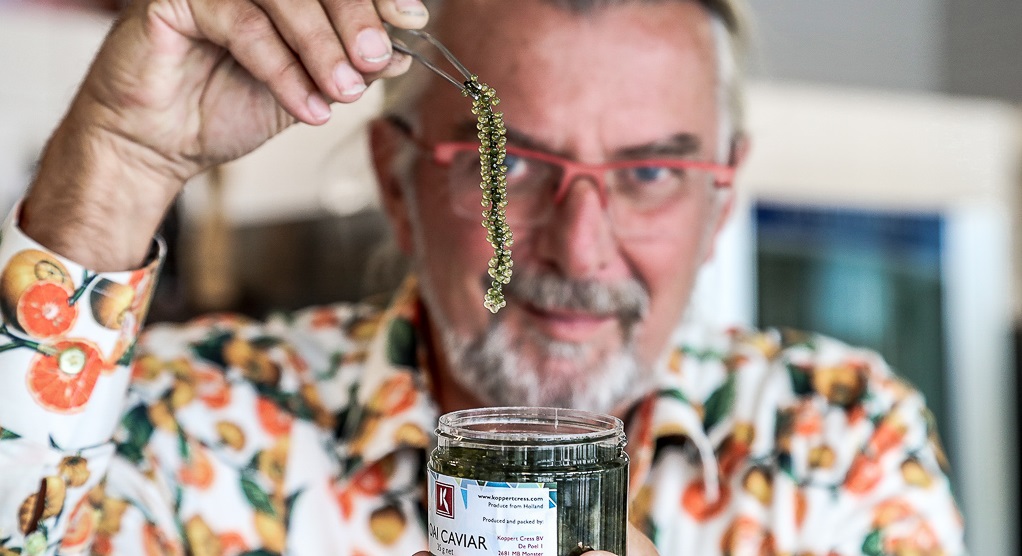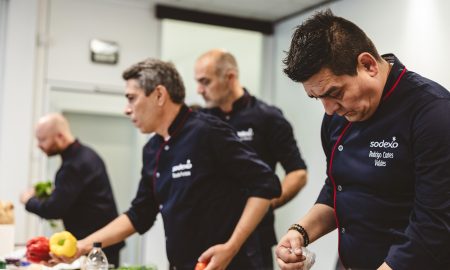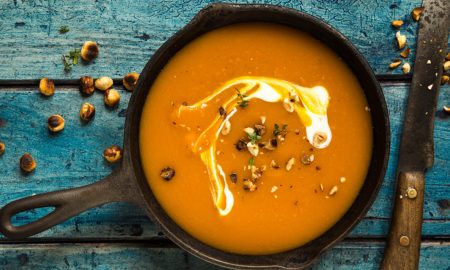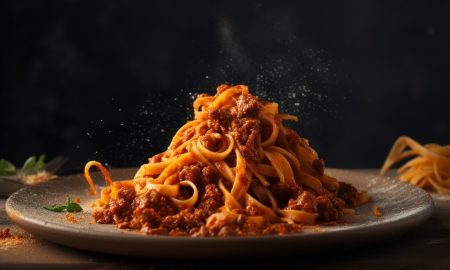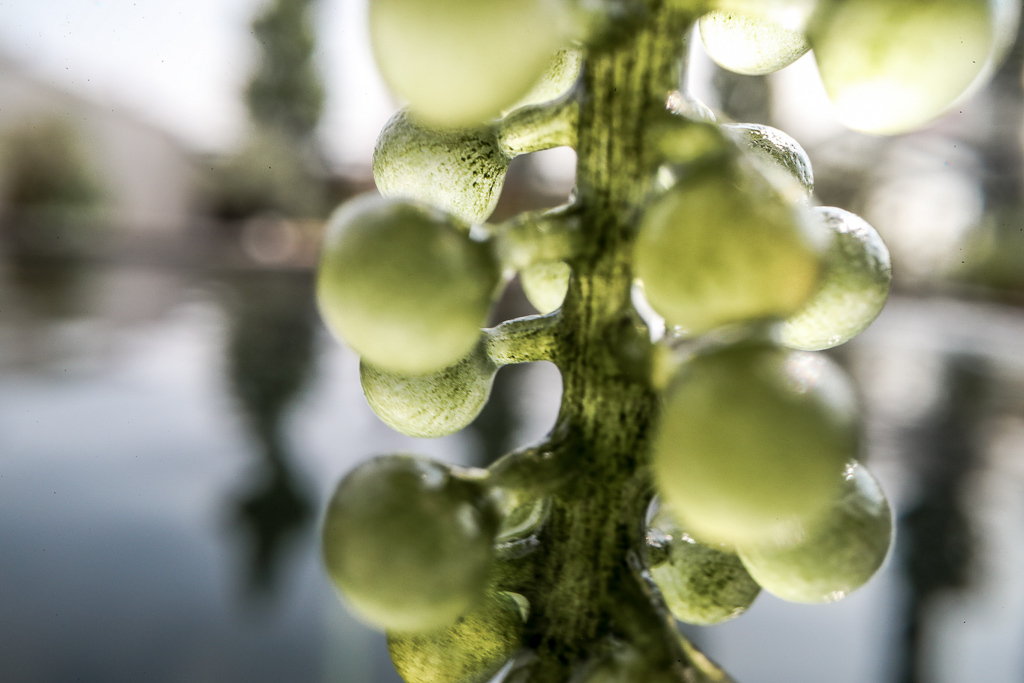
Image: Michiel van der Spek
The term Moai originated in Japan. Moai comes from a group of elders in Okinawa, Japan, one of the original blue zones. “To date, the sea grape has been imported directly from Japan by many chefs, but it was often dried out or sold at horrendous prices,” explains Koppert Cress’ High End Gastronomy Expert, Marcel Thiele. But that has changed, however, because now the Dutch producer is cultivating the seaweed. “Rob Baan kept trying to find a way to grow it until he finally met a young innovator in the Netherlands who was devoted to cultivating seaweed,” Thiele continues. As a result, this “seaweed caviar” arrives fresh on the shelves of wholesalers, hassle free. The seaweed can be stored for up to seven days at a room temperature between 62 to 77 degrees Fahrenheit (17 to 25 degrees Celsius). Jonnie Boer from the Dutch three-star restaurant De Librije in Zwolle already uses the sea grape.
A pinch of salt, please!
Green caviar delivers a slightly salty taste similar to that of many crustaceans and shellfish. Therefore, it can be used wherever a salty note is desired. In Filipino cuisine, seaweed is traditionally prepared as a vinegary and spicy salad. It can also be used in cocktails.
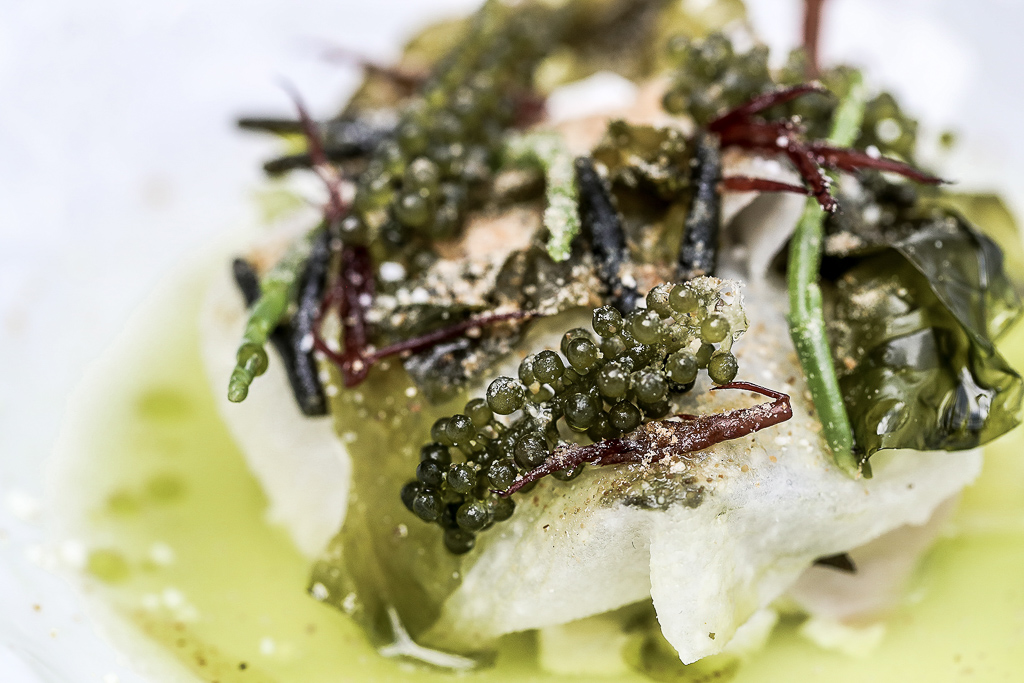
Image: Michiel van der Spek
Demanding cultivation
Since sea grape cultivation is very complex and expensive, there are no major producers in Europe, other than Koppert Cress. The seaweed needs warm and very salty seawater pools to thrive. It is found naturally and in large quantities in the shallow coastal waters of the Indian and Pacific Oceans.
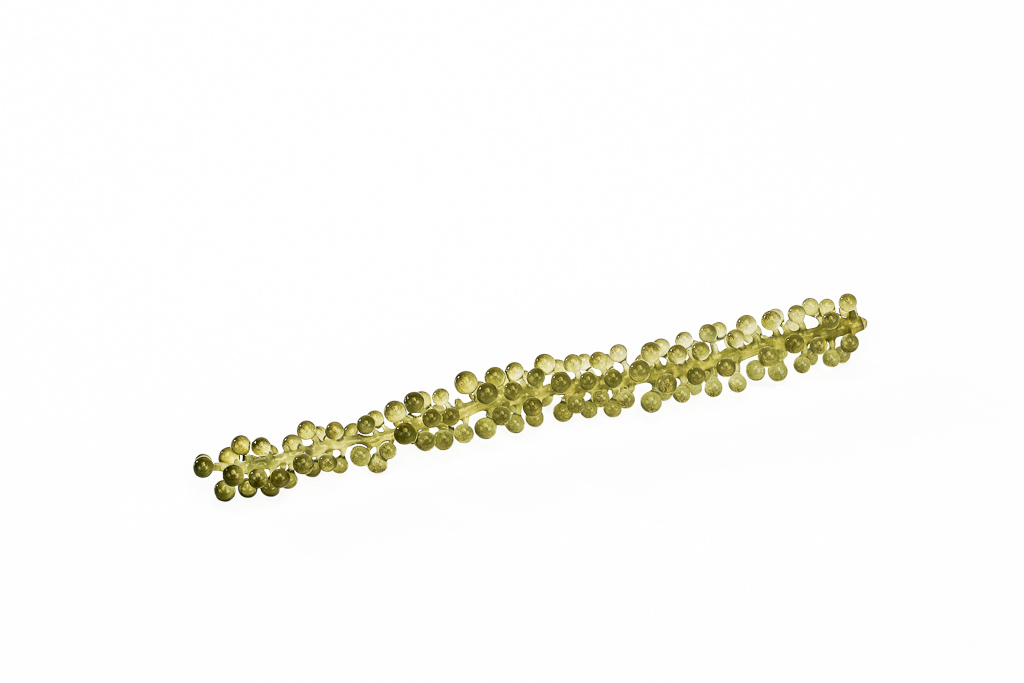
Image: Michiel van der Spek
Unique mouthfeel
“It’s hard to describe the mouthfeel when you bite into it,” says Thiele, as he tries to find words to describe the hallmarks of Moai caviar. Sea grape pearls are firmer than fish roe, and they crunch a lot when you bite on them. To keep this “kick” when eating, you definitely need to use the entire grape.


